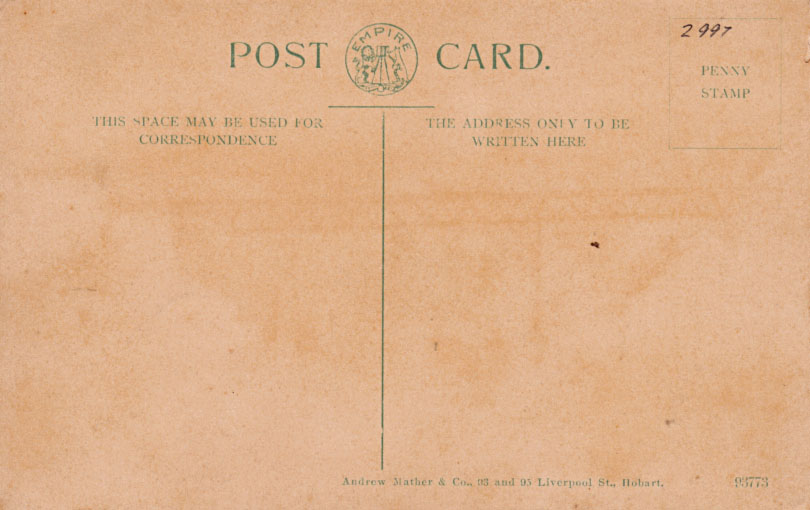This is a series of coloured cards of which I have seen only a few examples. The cards are generally similar to the coloured cards of Series 3 and Series 4 in terms of printing method, but differ in the detail of arrangement of the front and back. But the presence of the "Empire" logo between POST and CARD on the back is unique to this series, as discussed in "Remarks" below.
Printing: The printer can be identified as C.G. Röder, Liepzig, Germany, from two features. Firstly, the cards are printed by three layers of lithography (red, yellow, blue) with a black collotype layer superimposed. This the method used by C.G. Röder at the time. Secondly, the card numbers on the back of the cards in the bottom right are in the position, font and style of C.G. Röder numbers. These date the printing to 1906.

Date Published: From the printing date and the earlist postmark date of 25 April 1907 the publication date can be set at 1906 or 1907.
Number in Series: Unknown
Identification: The publishers name and address is on the back of the cards at the lower right. An "Empire" logo appears between the words POSR CARD at the top rear.
Remarks: A remarkable feature of this series is the presence a circular EMPIRE logo on the back of the cards, between POST and CARD. This is puzzling, as Empire was a brand of photographic printing paper, preprinted with a postcard back, and bearing the Empire logo of lion and kangaroo in a circle. Empire brand printing paper was used by some Tasmanian postcard publishers such as R.C. Harvey in the early 20th century. Why then does this logo appear on coloured postcards printed in Germany?
I think the explaination lies in the method used to print coloured cards at the time. The customer sent to the printer a black and white print of the photo to be reproduced on the card - colour photography had not yet been invented in 1906. The printer's colourist then invented the colours for the image, and three seperate colour printing plates were prepared for printing the front. For the back of the card, the printer did the layout according to the customer's instructions, but if none were provided or they were inadequate, the printer followed their standard house style or used their own judgement. It seems in this case that Mathers sent the printer black and white photos on Empire postcard paper. When composing the back layout, the printer, never having seen the Empire logo before (it was an Australian product) assumed that it was Mather's logo and incorporated it in the design.
